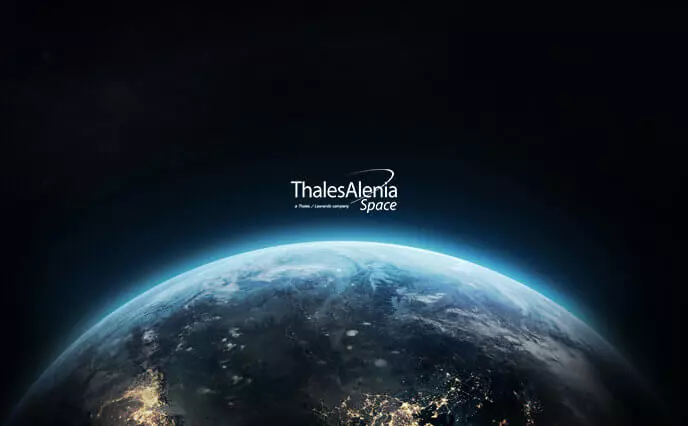Thales Alenia Space and Inmarsat to enhance air traffic management in Europe

Thales Alenia Space and Inmarsat to enhance air traffic management in Europe
March 6, 2018 – Thales Alenia Space, the joint company between Thales (67%) and Leonardo (33%), and Inmarsat, the world’s leading provider of global mobile satellite communications, will work together with the European Space Agency (ESA) on Iris, a ground-breaking programme that will enhance air traffic management in Europe.
The programme, which supports the Single European Skies ATM Research (SESAR) masterplan, will develop satellite communication services that support more efficient air traffic management, including the continuous exchange of information on aircraft flight position and waypoints, allowing pilots and air traffic controllers to fly closer to optimum flight paths that save fuel and cut CO2 emissions, while also reducing flight times.
Powered by Inmarsat’s new SB-S platform, which is already being deployed by airlines, Iris’s enhanced IP-based capabilities will relieve pressure on currently crowded VHF radio links, which are near capacity.
The project, which lasts 36 months, is split into the two phases:
- Phase 1: Finalisation of the end-to-end Iris system, capable of operating an initial (partial) service to support the medium-term goals of the European Commission’s SESAR initiative.
- Phase 2: Gearing up the Iris system for Full Operational Capability (FOC), contingent on the results of Phase 1.
About Iris
Iris is the satellite communication for air traffic management (ATM) section of ESA’s ARTES (Advanced Research in Telecommunications Systems) program. It is implemented in close collaboration with the Single European Sky Air Traffic Management Research (SESAR) Programme launched in 2006 by Eurocontrol and the European Commission. Iris enables the SESAR master plan for modernisation of air traffic management across Europe.
By 2021, Iris IOC will provide air–ground communications to support initial “4D” flight path control, pinpointing an aircraft in four dimensions: latitude, longitude, altitude and time. This will enable precise tracking of flights and more efficient management of traffic. High-capacity digital data links via satellite, carrying this information to cockpit crews in continental and oceanic airspace, are expected to become the norm, with voice communications used only for specific operations.
By 2028, Iris FOC will enable full 4D trajectory management over airspaces across the globe and the data link will be the primary means of communications between controllers and cockpit crews.
About Thales Alenia Space
Combining 40 years of experience and a unique diversity of expertise, talents and cultures, Thales Alenia Space architects design and deliver high technology solutions for telecommunications, navigation, Earth observation, environmental management, exploration, science and orbital infrastructures. Governments, institutions and companies rely on Thales Alenia Space to design, operate and deliver satellite-based systems that help them position and connect anyone or anything, everywhere, help observe our planet, help optimize the use of our planet's – and our solar system’s – resources. Thales Alenia Space believes in space as humankind’s new horizon, which will enable to build a better, more sustainable life on Earth. A joint venture between Thales (67%) and Leonardo (33%), Thales Alenia Space also teams up with Telespazio to form the parent companies’ Space Alliance, which offers a complete range of services and solutions. Thales Alenia Space posted consolidated revenues of about 2.6 billion euros in 2017 and has 7,980 employees in nine countries. www.thalesaleniaspace.com
Thales Alenia Space Press Contacts:
Sandrine Bielecki
Phone: +33 (0)4 92 92 70 94
sandrine.bielecki@thalesaleniaspace.com
Chrystelle Dugimont
Phone: +33 (0)4 92 92 74 06
chrystelle.dugimont@thalesaleniaspace.com
Cinzia Marcanio
Phone: +39 06 41512685
cinzia.marcanio@thalesaleniaspace.com

